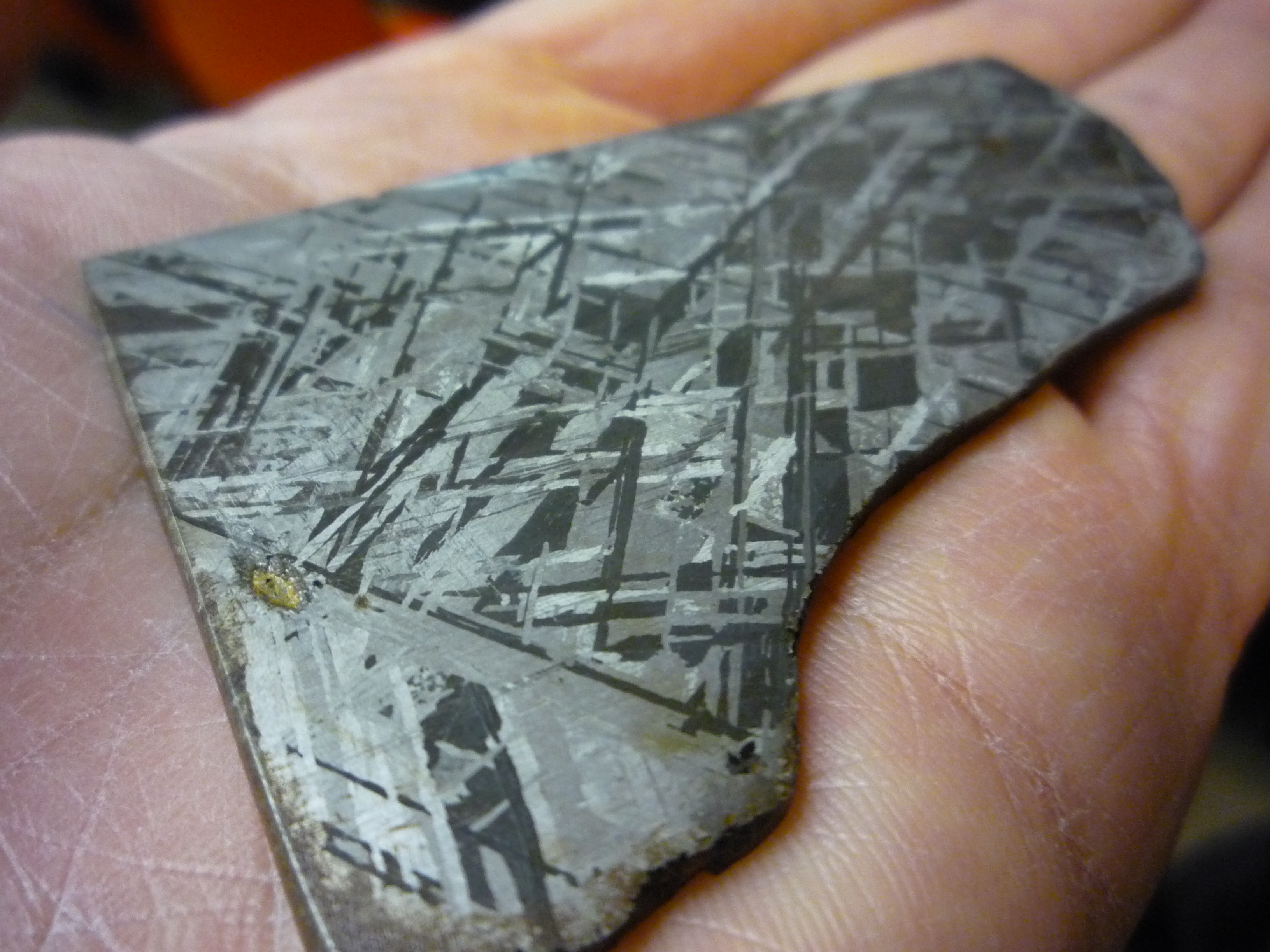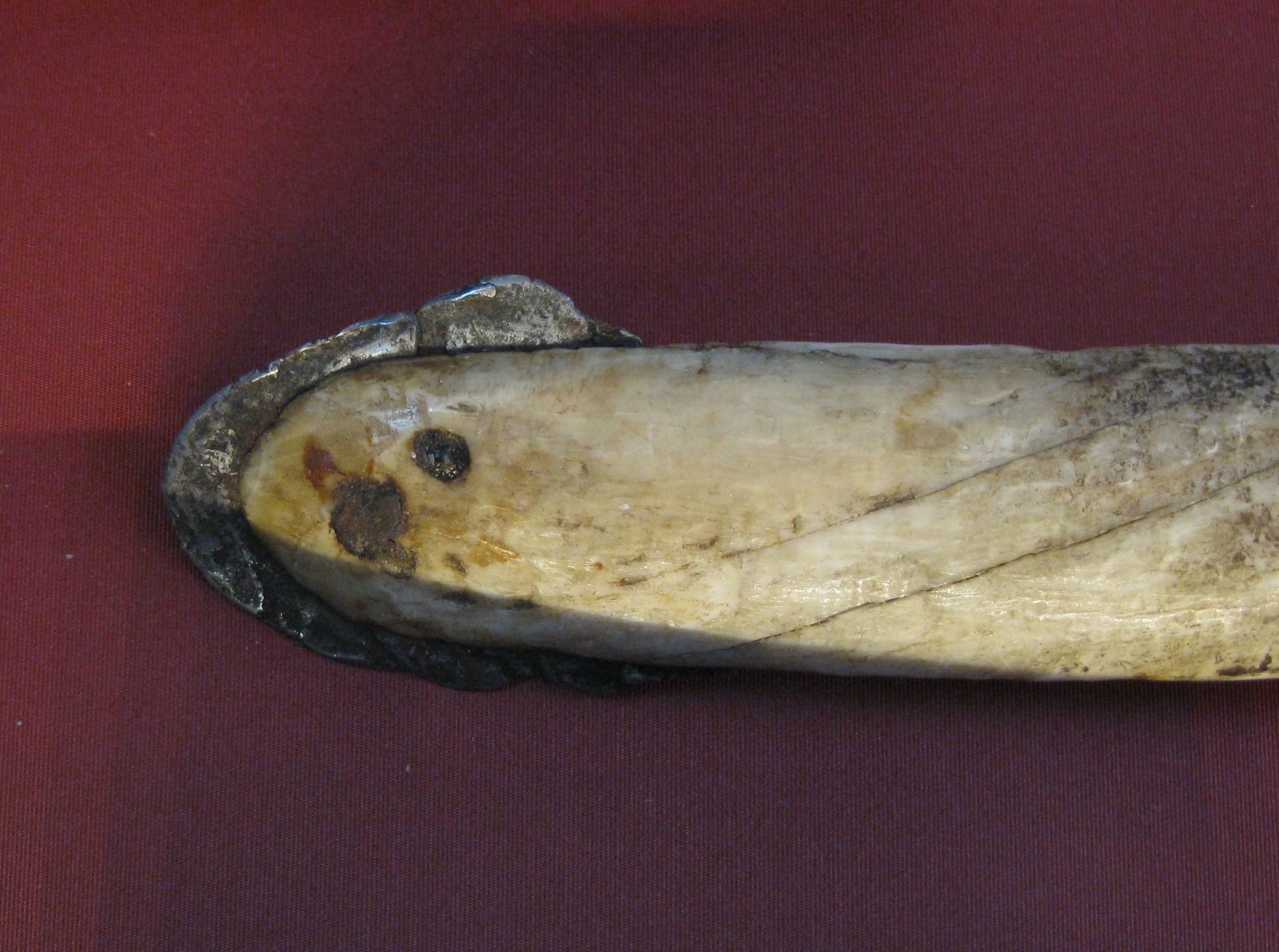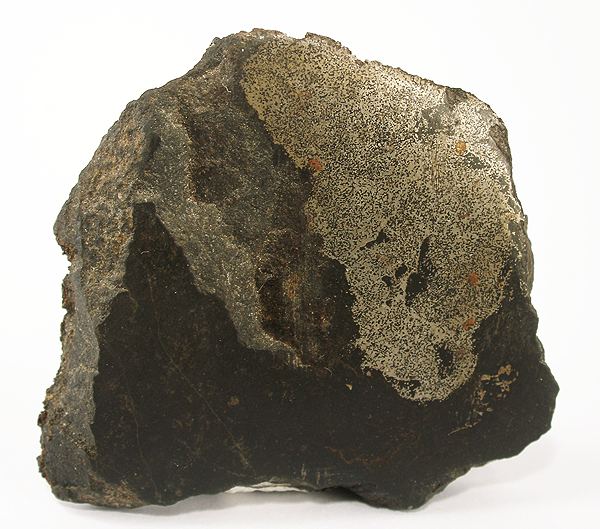|
Iron–nickel Alloy
An iron–nickel alloy or nickel–iron alloy, abbreviated FeNi or NiFe, is a group of alloys consisting primarily of the elements nickel (Ni) and iron (Fe). It is the main constituent of the "iron" planetary cores and iron meteorites. In chemistry, the acronym NiFe refers to an iron–nickel catalyst or component involved in various chemical reactions, or the reactions themselves; in geology, it refers to the main constituents of telluric planetary cores (including Earth's). Some manufactured alloys of iron–nickel are called ''nickel steel'' or '' stainless steel''. Depending on the intended use of the alloy, these are usually fortified with small amounts of other metals, such as chromium, cobalt, molybdenum, and titanium. Astronomy and geology Iron and nickel are the most abundant elements produced during the final stage of stellar nucleosynthesis in massive stars. Heavier elements require other forms of nucleosynthesis, such as during a supernova or neutron star merg ... [...More Info...] [...Related Items...] OR: [Wikipedia] [Google] [Baidu] |
Molybdenum
Molybdenum is a chemical element with the symbol Mo and atomic number 42 which is located in period 5 and group 6. The name is from Neo-Latin ''molybdaenum'', which is based on Ancient Greek ', meaning lead, since its ores were confused with lead ores. Molybdenum minerals have been known throughout history, but the element was discovered (in the sense of differentiating it as a new entity from the mineral salts of other metals) in 1778 by Carl Wilhelm Scheele. The metal was first isolated in 1781 by Peter Jacob Hjelm. Molybdenum does not occur naturally as a free metal on Earth; it is found only in various oxidation states in minerals. The free element, a silvery metal with a grey cast, has the sixth-highest melting point of any element. It readily forms hard, stable carbides in alloys, and for this reason most of the world production of the element (about 80%) is used in steel alloys, including high-strength alloys and superalloys. Most molybdenum compounds have low so ... [...More Info...] [...Related Items...] OR: [Wikipedia] [Google] [Baidu] |
Maraging Steel
Maraging steels (a portmanteau of "martensitic" and "aging") are steels that are known for possessing superior strength and toughness without losing ductility. ''Aging'' refers to the extended heat-treatment process. These steels are a special class of very-low-carbon ultra-high-strength steels that derive their strength not from carbon, but from precipitation of intermetallic compounds. The principal alloying element is 15 to 25 wt% nickel. Secondary alloying elements, which include cobalt, molybdenum and titanium, are added to produce intermetallic precipitates. Original development (by Bieber of Inco in the late 1950s) was carried out on 20 and 25 wt% Ni steels to which small additions of aluminium, titanium, and niobium were made; a rise in the price of cobalt in the late 1970s led to the development of cobalt-free maraging steels. The common, non-stainless grades contain 17–19 wt% nickel, 8–12 wt% cobalt, 3–5 wt% molybdenum and 0.2–1.6 wt% titanium. Addition of chromiu ... [...More Info...] [...Related Items...] OR: [Wikipedia] [Google] [Baidu] |
Steel
Steel is an alloy made up of iron with added carbon to improve its strength and fracture resistance compared to other forms of iron. Many other elements may be present or added. Stainless steels that are corrosion- and oxidation-resistant typically need an additional 11% chromium. Because of its high tensile strength and low cost, steel is used in buildings, infrastructure, tools, ships, trains, cars, machines, electrical appliances, weapons, and rockets. Iron is the base metal of steel. Depending on the temperature, it can take two crystalline forms (allotropic forms): body-centred cubic and face-centred cubic. The interaction of the allotropes of iron with the alloying elements, primarily carbon, gives steel and cast iron their range of unique properties. In pure iron, the crystal structure has relatively little resistance to the iron atoms slipping past one another, and so pure iron is quite ductile, or soft and easily formed. In steel, small amounts of carb ... [...More Info...] [...Related Items...] OR: [Wikipedia] [Google] [Baidu] |
List Of Alloys
This is a list of named alloys grouped alphabetically by base metal. Within these headings, the alloys are also grouped alphabetically. Some of the main alloying elements are optionally listed after the alloy names. Alloys by base metal Aluminium * AA-8000: used for electrical building wire in the U.S. per the National Electrical Code, replacing AA-1350. * Al–Li (2.45% lithium): aerospace applications, including the Space Shuttle * Alnico (nickel, cobalt): used for permanent magnets * Aluminium–Scandium (scandium) * Birmabright (magnesium, manganese): used in car bodies, mainly used by Land Rover cars. * Duralumin (copper) * Hiduminium or R.R. alloys (2% copper, iron, nickel): used in aircraft pistons * Hydronalium (up to 12% magnesium, 1% manganese): used in shipbuilding, resists seawater corrosion * Italma (3.5% magnesium, 0.3% manganese): formerly used to make coinage of the Italian lira * Magnalium (5-50% magnesium): used in airplane bodies, ladders, pyrotechnics, ... [...More Info...] [...Related Items...] OR: [Wikipedia] [Google] [Baidu] |
Atomic Number
The atomic number or nuclear charge number (symbol ''Z'') of a chemical element is the charge number of an atomic nucleus. For ordinary nuclei, this is equal to the proton number (''n''p) or the number of protons found in the nucleus of every atom of that element. The atomic number can be used to uniquely identify ordinary chemical elements. In an ordinary electric charge, uncharged atom, the atomic number is also equal to the number of electrons. For an ordinary atom, the sum of the atomic number ''Z'' and the neutron number ''N'' gives the atom's atomic mass number ''A''. Since protons and neutrons have approximately the same mass (and the mass of the electrons is negligible for many purposes) and the Binding energy#Mass change, mass defect of the nucleon binding is always small compared to the nucleon mass, the atomic mass of any atom, when expressed in Atomic mass unit, unified atomic mass units (making a quantity called the "atomic mass, relative isotopic mass"), is within ... [...More Info...] [...Related Items...] OR: [Wikipedia] [Google] [Baidu] |
Meteoric Iron
Meteoric iron, sometimes meteoritic iron, is a native metal and early-universe protoplanetary-disk remnant found in meteorites and made from the elements iron and nickel, mainly in the form of the mineral phases kamacite and taenite. Meteoric iron makes up the bulk of iron meteorites but is also found in other meteorites. Apart from minor amounts of telluric iron, meteoric iron is the only naturally occurring native metal of the element iron (in metallic form rather than in an ore) on the Earth's surface. Mineralogy The bulk of meteoric iron consists of taenite and kamacite. Taenite is a face-centered cubic and kamacite a body-centered cubic iron-nickel alloy. Meteoric iron can be distinguished from telluric iron by its microstructure and perhaps by its chemical composition also, since meteoritic iron contains more nickel and less carbon. Trace amounts of gallium and germanium in meteoric iron can be used to distinguish different meteorite types. The meteoric iron in sto ... [...More Info...] [...Related Items...] OR: [Wikipedia] [Google] [Baidu] |
Telluric Iron
Telluric iron, also called native iron, is iron that originated on Earth, and is found in a metallic form rather than as an ore. Telluric iron is extremely rare, with only one known major deposit in the world, located in Greenland. Introduction With the exception of its molten core, nearly all elemental iron on Earth is found as iron ores. All metallic iron was thought to have been transformed into iron oxides during the Great Oxidation Event, beginning roughly 2 billion years ago, among other theories. Until the late 1800s, iron as a native metal was only a matter of speculation, outside of isolated Greenland. The only known, terrestrial iron in metallic form were found as meteorites, which were deposited onto the Earth from outer space. Telluric iron is so named after the Latin word ''Tellus'', meaning "Earth" (the planet, as opposed to ''terra'' meaning "earth": the land, ground or soil), combined with the suffix ''-ic'' meaning "of" or "born from", differentiating it from ... [...More Info...] [...Related Items...] OR: [Wikipedia] [Google] [Baidu] |
Meteorite
A meteorite is a solid piece of debris from an object, such as a comet, asteroid, or meteoroid, that originates in outer space and survives its passage through the atmosphere to reach the surface of a planet or moon. When the original object enters the atmosphere, various factors such as friction, pressure, and chemical interactions with the atmospheric gases cause it to heat up and radiate energy. It then becomes a meteor and forms a fireball, also known as a shooting star; astronomers call the brightest examples " bolides". Once it settles on the larger body's surface, the meteor becomes a meteorite. Meteorites vary greatly in size. For geologists, a bolide is a meteorite large enough to create an impact crater. Meteorites that are recovered after being observed as they transit the atmosphere and impact the Earth are called meteorite falls. All others are known as meteorite finds. Meteorites have traditionally been divided into three broad categories: stony meteorites that ... [...More Info...] [...Related Items...] OR: [Wikipedia] [Google] [Baidu] |
Neutron Star Merger
A neutron star merger is a type of stellar collision. It occurs in a fashion similar to the rare brand of type Ia supernovae resulting from merging white dwarf stars. When two neutron stars orbit each other closely, they gradually spiral inward due to gravitational radiation. When the two neutron stars meet, their merger leads to the formation of either a more massive neutron star, or a black hole (depending on whether the mass of the remnant exceeds the Tolman–Oppenheimer–Volkoff limit). The merger can also create a magnetic field that is trillions of times stronger than that of Earth in a matter of one or two milliseconds. These events are believed to create short gamma-ray bursts. The merger of binary neutron stars is believed to be the origin of most elements with large atomic weights - the r-process elements. The mergers are also believed to produce kilonovae, which are transient sources of fairly isotropic longer wave electromagnetic radiation due to the ra ... [...More Info...] [...Related Items...] OR: [Wikipedia] [Google] [Baidu] |
Supernova
A supernova is a powerful and luminous explosion of a star. It has the plural form supernovae or supernovas, and is abbreviated SN or SNe. This transient astronomical event occurs during the last evolutionary stages of a massive star or when a white dwarf is triggered into runaway nuclear fusion. The original object, called the ''progenitor'', either collapses to a neutron star or black hole, or is completely destroyed. The peak optical luminosity of a supernova can be comparable to that of an entire galaxy before fading over several weeks or months. Supernovae are more energetic than novae. In Latin, ''nova'' means "new", referring astronomically to what appears to be a temporary new bright star. Adding the prefix "super-" distinguishes supernovae from ordinary novae, which are far less luminous. The word ''supernova'' was coined by Walter Baade and Fritz Zwicky in 1929. The last supernova to be directly observed in the Milky Way was Kepler's Supernova in 1604, appea ... [...More Info...] [...Related Items...] OR: [Wikipedia] [Google] [Baidu] |
Nucleosynthesis
Nucleosynthesis is the process that creates new atomic nuclei from pre-existing nucleons (protons and neutrons) and nuclei. According to current theories, the first nuclei were formed a few minutes after the Big Bang, through nuclear reactions in a process called Big Bang nucleosynthesis. After about 20 minutes, the universe had expanded and cooled to a point at which these high-energy collisions among nucleons ended, so only the fastest and simplest reactions occurred, leaving our universe containing hydrogen and helium. The rest is traces of other elements such as lithium and the hydrogen isotope deuterium. Nucleosynthesis in stars and their explosions later produced the variety of elements and isotopes that we have today, in a process called cosmic chemical evolution. The amounts of total mass in elements heavier than hydrogen and helium (called 'metals' by astrophysicists) remains small (few percent), so that the universe still has approximately the same composition. Stars fus ... [...More Info...] [...Related Items...] OR: [Wikipedia] [Google] [Baidu] |






